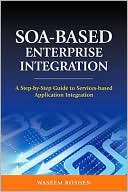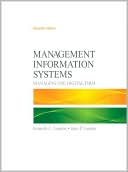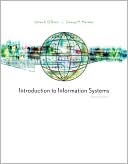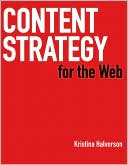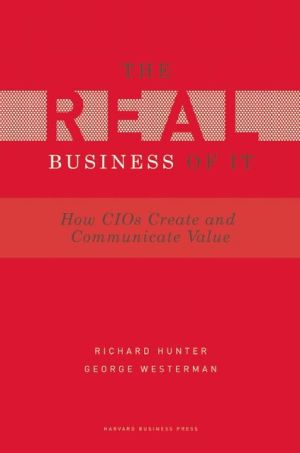SOA-Based Enterprise Integration: A Step-by-Step Guide to Services-based Application
Search in google:
Implement Service-Oriented Architecture Across the EnterpriseTransform your existing IT infrastructure into a unified, highly scalable computing landscape with the latest SOA integration technologies. Using straightforward explanations and code samples, SOA-Based Enterprise Integration explains how to deploy service-oriented connectivity solutions that fit your organization's needs. Get details on configuring packaged software from SAP, Oracle, Siebel, PeopleSoft, and IBM, integrating mainframe applications, and developing web services. You'll also learn how to implement a custom Enterprise Service Bus (ESB), overcome format and protocol mismatches, and optimize QoS.Connect applications using common databases, sockets, and RPCsReuse code with distributed objects and ORBsManage distributed objects and applications using CORBA and Java RMIUse asynchronous messaging to handle large transaction volumesOvercome heterogeneity and mismatch issues using web servicesPerform content- and context-based routing with ESB technologyIntegrate mainframe and packaged applications using adapters and brokersWork with XML, SOAP, WSDL, and UDDIDevelop web services with Java/J2EECompose business processes using BPELWaseem Roshen, Ph.D., is a senior IT architect in the Enterprise Architecture and Technology Center of Excellence at IBM.
Foreword xiiiPreface xviiAcknowledgments xixPart 1 Introduction 1Chapter 1 Introduction to the Book 3Book Objectives 4Intended Audience 5Organization of the Book 6Conclusion 15Chapter 2 Overview and Basic Concepts 17Services in Software 17Business Problem Addressed by SOA 21Definitions 25Some Basic Concepts 29Conclusion 32Part 2 Evolution Of Integration Patterns 33Chapter 3 Sockets and Data Sharing 35File-Based Data Sharing 35Common Database 40Sockets 43Conclusion 48Chapter 4 Remote Procedure Call (RPC) 49Three Types of Function Calls 51Types of Functions 53Restricted RPC, or Doors 58Remote Procedure Call (RPC) 58Port Mapper 65RPC 65Conclusion 66Chapter 5 Distributed Objects and Application Servers 69CORBA Overview 71CORBA Model 72Sample CORBA Applications 83Application Servers 90Conclusion 92Chapter 6 Messaging 95Overview 96Channels 100Messages 101End Points 104Conclusion 111Part 3 Service-Oriented Architecture-Based Integration 113Chapter 7 Web Services Overview 115Review of Part II (Chapters 3-6) 115Heterogeneity Problem 117XML 120SOAP 122WSDL 124UDDI Registry 128WS-I Basic Profile 130Conclusion 131Chapter 8 Enterprise Service Bus 133Routing and Scalable Connectivity 134Protocol Transformation 138Data/Message Transformation 139Core Functionalities 140Optional Features 143Logical Components 144Deployment Configurations 147Types of ESBs 150Practical Usage Scenarios 153Conclusion 160Part 4 Integrating Existing Applications 163Chapter 9 Integrating Mainframe Applications 165Mainframe Application Types167Preliminaries 169Summary of Point-to-Point Integration 185ESB-Based Integration Options 185Conclusion 194Chapter 10 Integrating Package Applications 197Adapters 199J2EE Connector Architecture (JCA) 201Introduction to SAP and Its Interfaces 205WebSphere Adapter for SAP Software 206Exposure as Web Services 209Conclusion 209Part 5 Understanding and Developing Web Services 211Chapter 11 XML 213Overview 214XML Namespaces 215XML Schemas 217XML Processing/Parsing Models 221Conclusion 232Chapter 12 SOAP 233SOAP Messages 233SOAP Elements 235SOAP Attributes and Processing Model 238SOAP Message Exchange Types 242SOAP HTTP Binding 245Conclusion 249Chapter 13 WSDL 251Overview 252Containment Structure 256Elements of Abstract Interface Description 257Elements of the Implementation Part 262Logical Relationships 264SOAP Binding 264Conclusion 269Chapter 14 UDDI Registry 271Overview and Basic Data Model 272tModel 275Categorization and Identification Schemes 278Binding Template 280Use of WSDL in the UDDI Registry 282Summary of UDDI APIs 285Commercial Products 288Conclusion 289Chapter 15 Web Services Implementation 291Implementation Choices 292Building Web Service Clients 296Building Web Services 303Bottom-Up Approach 305Commercial Tools 306Conclusion 308Chapter 16 Integration Through Service Composition (BPEL) 311Overview 313Detailed Description 315Practical Example 323Conclusion 330Part 6 Appendixes 331References 333Glossary 337Index 347
